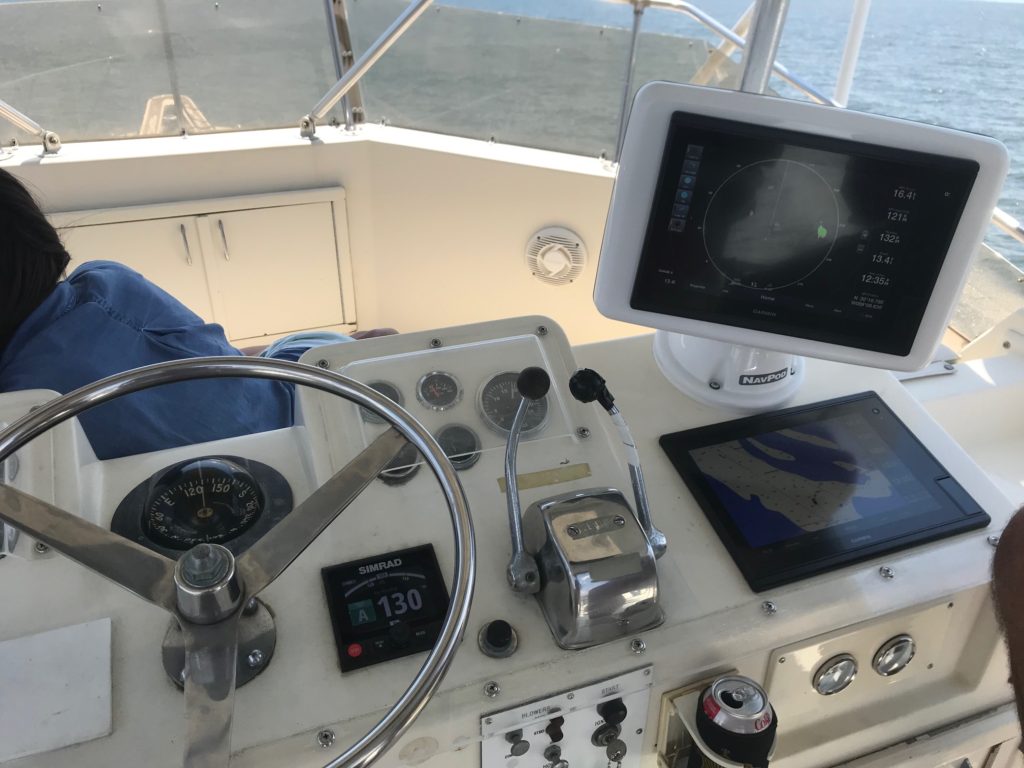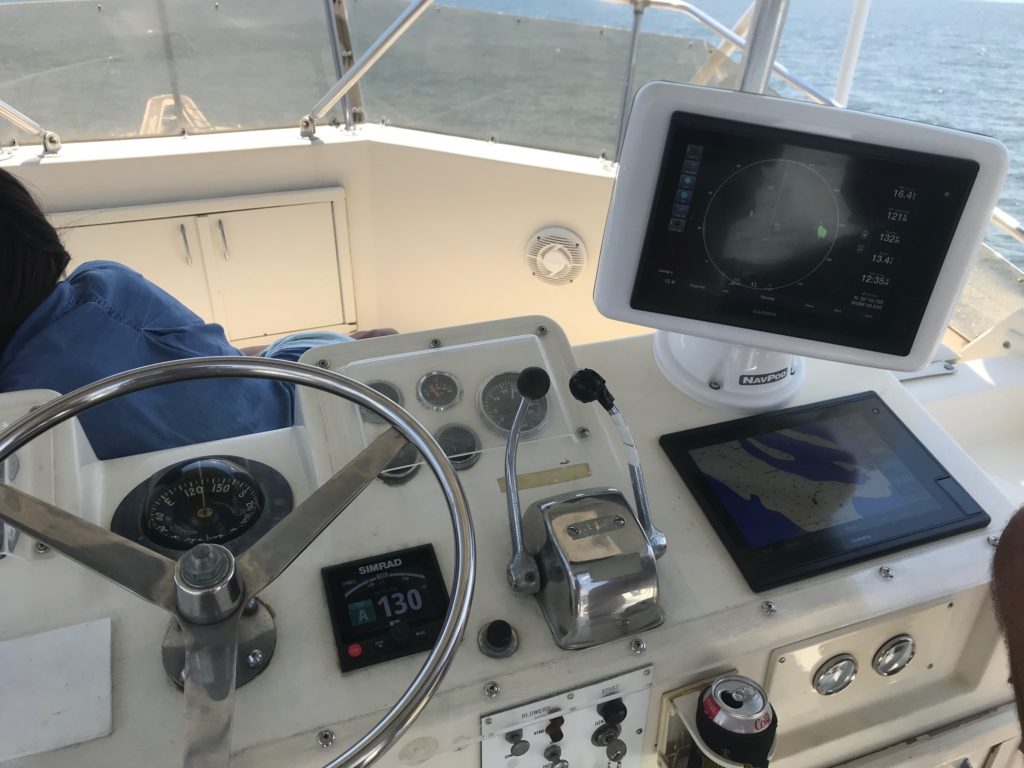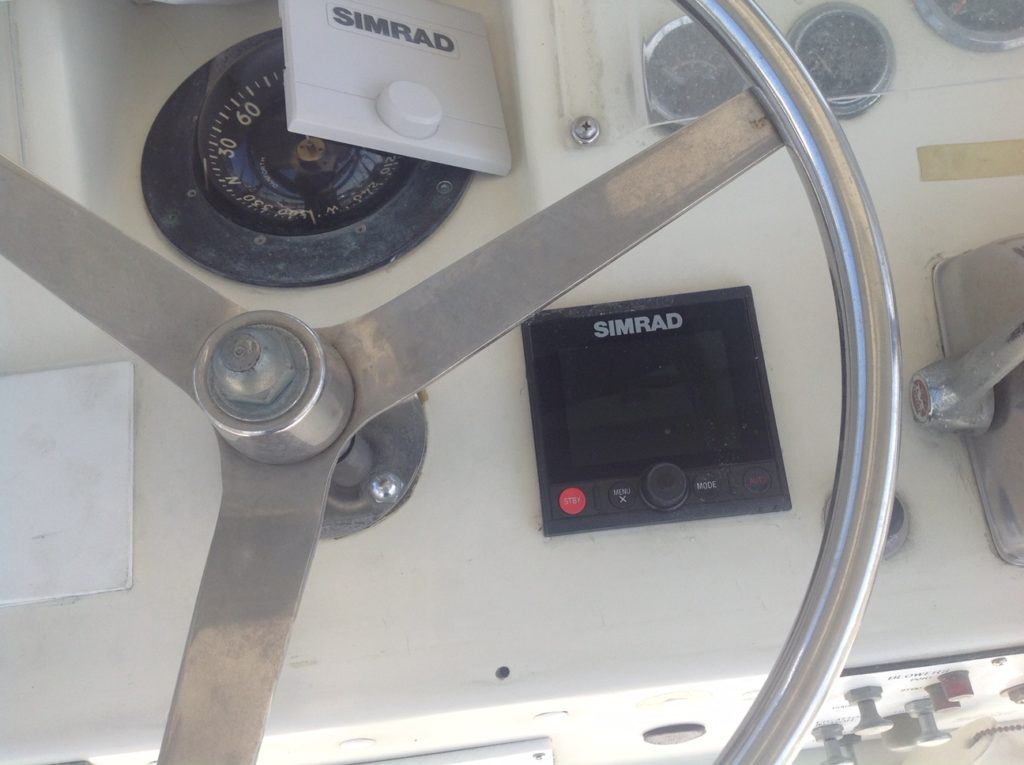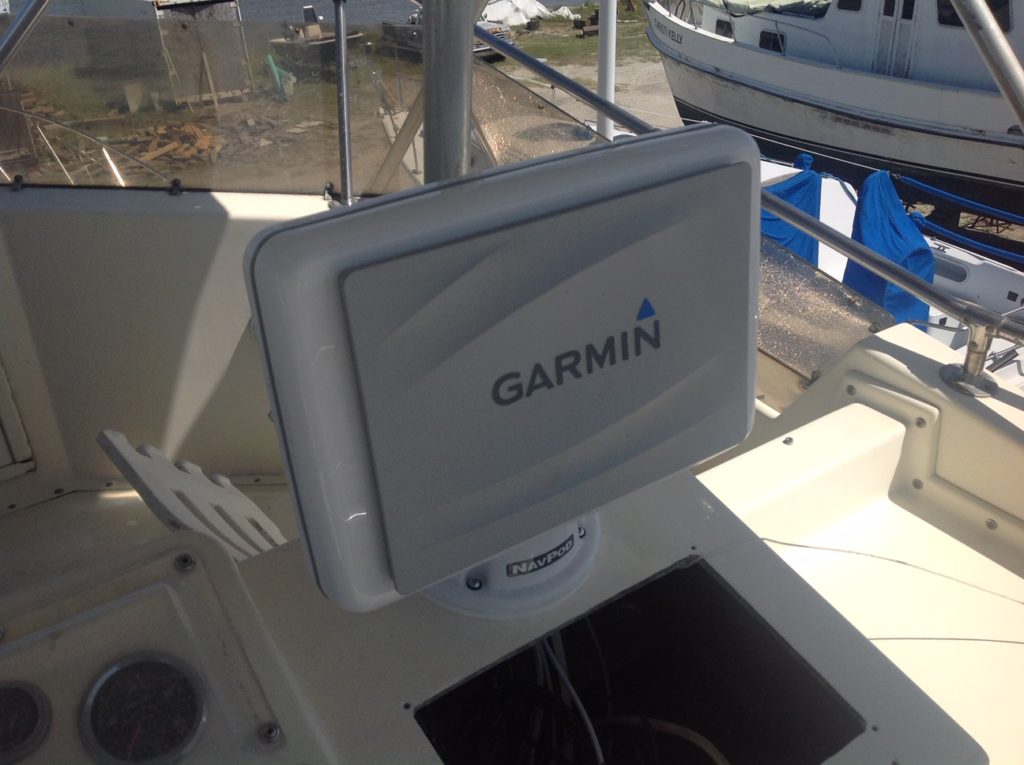The electronics that were on the boat when we purchased it were from the early 90s, when Loran C was still being used for a primary means of navigation. Needless to say, it was definitely time for an upgrade.
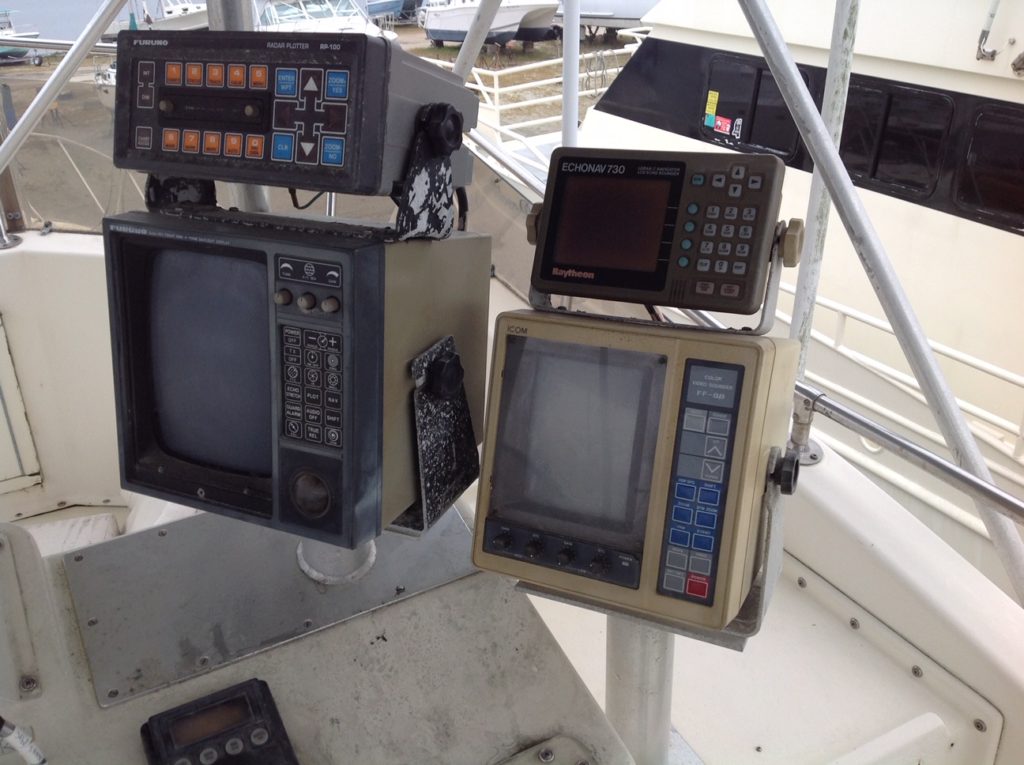
Equipment Selection
All of the major marine electronics manufacturers produce great products. It really comes down to user preference when selecting amongst Furuno, Garmin, Raymarine, Simrad, etc. In the past, many boats would use Furuno radars and Simrad (Robertson) autopilots because they were both recognized as the best for that particular piece of equipment. Now, all of these companies produce quality products across all of the different types of electronic navigation equipment.
Chartplotter
We chose to go with 2 – Garmin 1242xsv MFDs. We found the Garmin units easy to use, and we were already comfortable with them having had other Garmin equipment in the past. The 12″ size worked well for the available space as we just did not have room for anything larger. We considered the Garmin 7612, but found out the main differences between the 7612 and 1242 was an extra transducer port on the 7612 and a slightly faster operating system. A second transducer was not something we needed, and after trying out the 1242 in Advanced Marine’s showroom it seemed plenty fast enough. The extra cost of the 7612 vs. the 1242 just did not make sense for us.
Also, another thing that really differentiated Garmin from the other brands in my opinion is the Garmin Active Captain app. I love using the app on my iPad. Updates for the MFDs are easily downloaded through the app and wirelessly uploaded to the units. Route planning and creating waypoints using Active Captain is extremely easy. All of the user data you create can also be wirelessly transferred to the units.
Radar
For our radar we went with the Garmin GMR Fantom 24. It’s a low power output (40 watts) solid state radar. A great feature on it is Garmin’s motionscope technology which changes the color of targets that are moving toward you or away from you. There is also a trails option, and if you choose to add a heading sensor, the radar has a MARPA (mini automatic radar plotting aid) feature. With this feature you can track up to 10 targets and will know the speed, course over ground, closest point of approach (CPA), range, bearing, and time to CPA. All of that information is extremely useful in assisting with collision avoidance, especially if you are operating at night and don’t have a good visual aspect of other vessels.
Autopilot
The autopilot we ended up going with is a Simrad AP44. We chose Simrad because the autopilot previously on the boat was a Robertson (Robertson is now Simrad), and the old pump was still working and compatible with the AP44. It integrates with the Garmin MFDs, but updating it is not as easy as it would have been had we gone with a Garmin autopilot. Updates have to be downloaded onto a flash drive and then plugged into the back of the AP44 to install. Access to the back of the unit requires the foot rest panel under the helm to be removed. To us, the cost savings in not having to buy a new pump was worth the inconvenience of removing the panel when updates are required.
Mounting Location
One of the issues with doing an electronics upgrade to a boat of this vintage is finding a place to install them. There were no large MFDs to purchase in 1979 so it was not a problem back then. Finding a spot where they are easily visible and accessible from the helm was not as easy as it would be in a new sport fish with ample dash space.
We did not want to put them in the overhead electronics box because of the uncomfortableness it creates by always having to look up to see them. You would also have to stand up every time you needed make any change to the display. What worked best for us was to place one of the Garmin 12″ units in the dash to starboard of the helm and the other in a Navpod directly behind it. Both are easily viewable and reachable from either helm chair.
All equipment was supplied and installed by Advanced Marine in Biloxi, MS. They did a great job and were very easy to work with.
